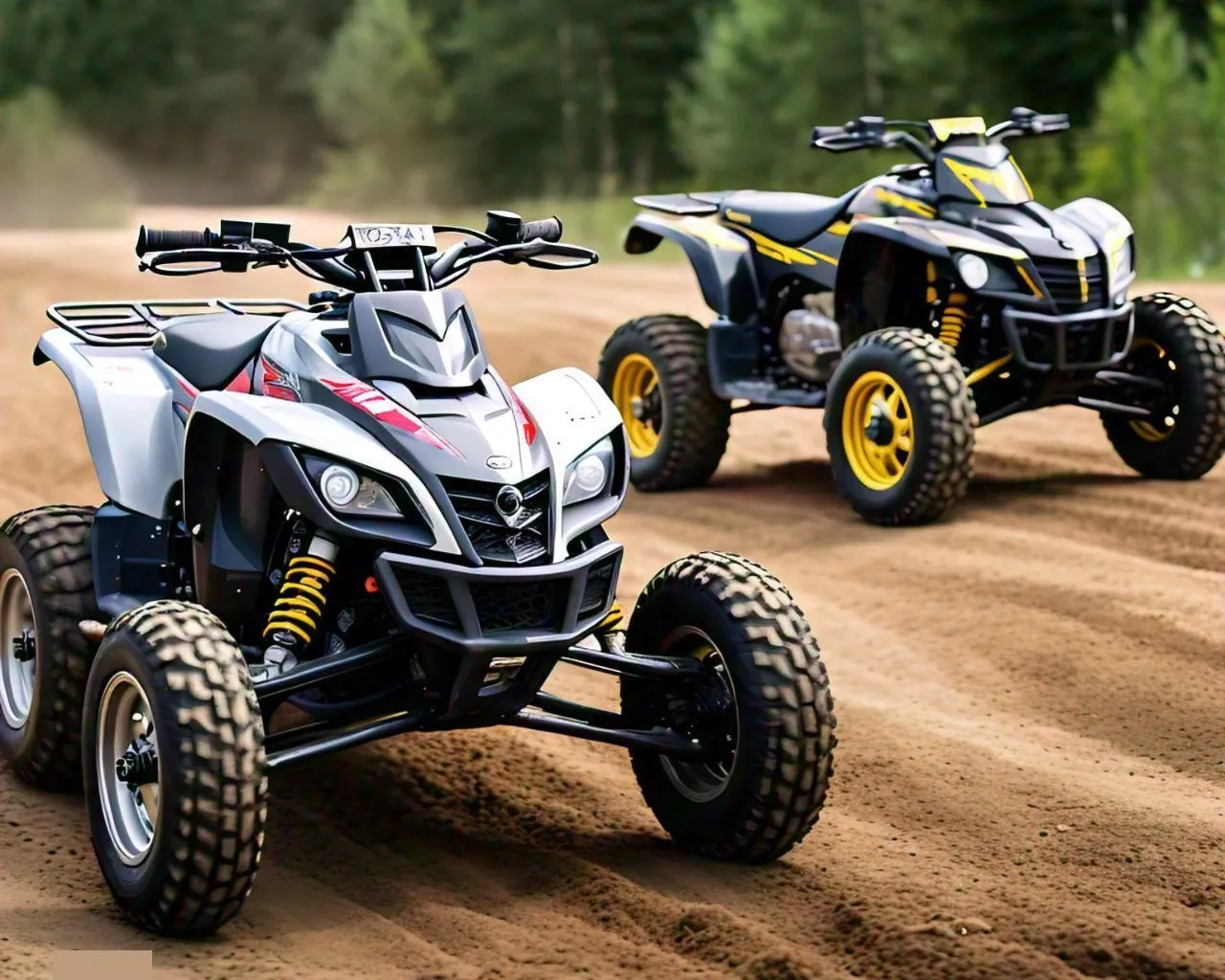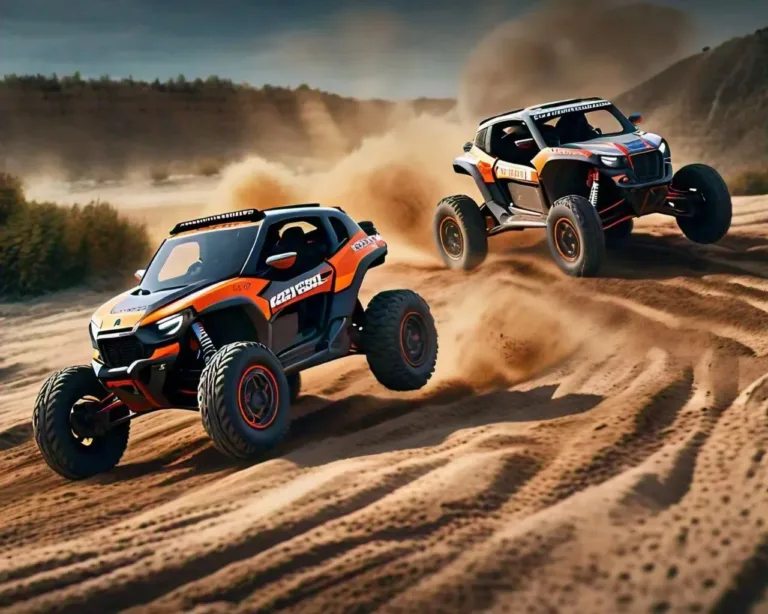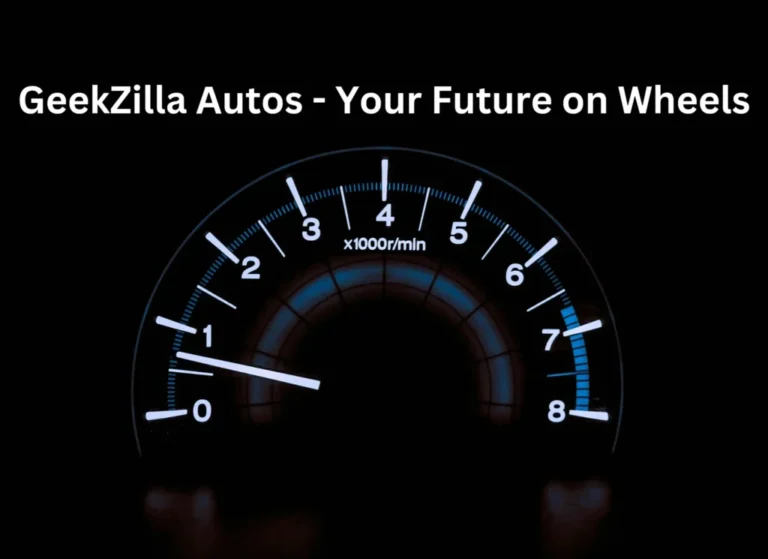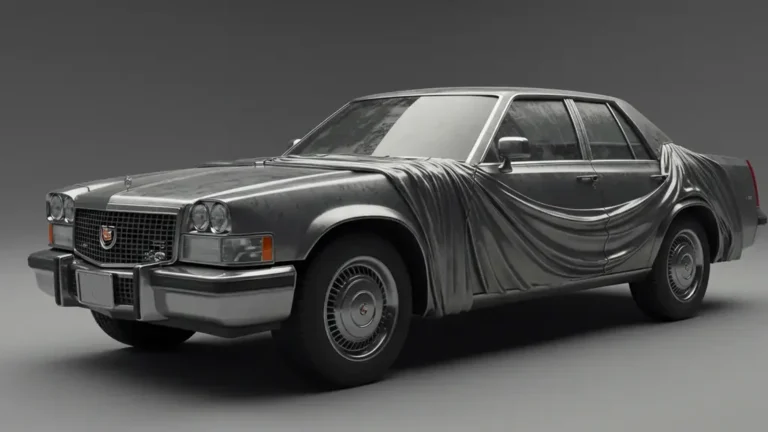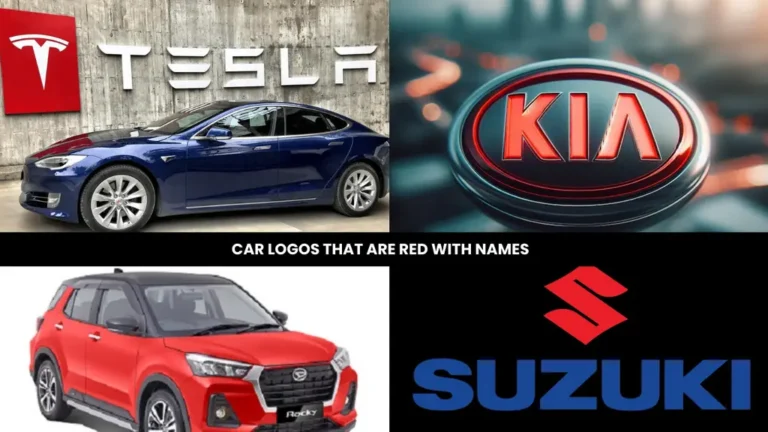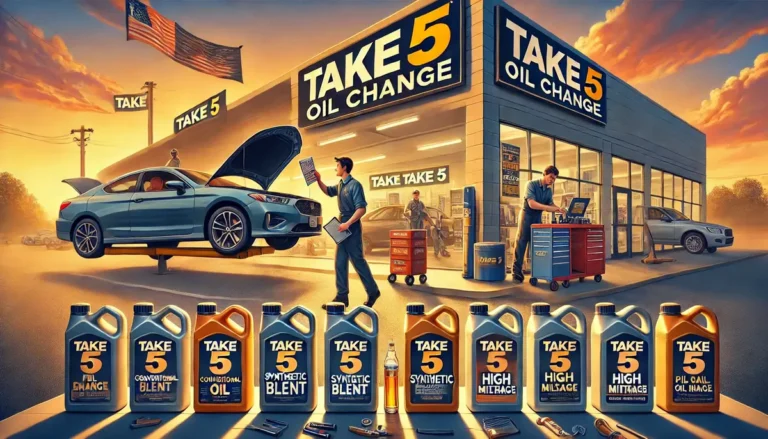XXC vs XMR 2023 – A Detailed Comparison
The 2023 models of Can-Am’s Renegade 1000R XXC and XMR are standout choices for off-road enthusiasts, each designed to cater to different styles of riding. This comprehensive guide will delve into every aspect of these two ATVs, comparing their features, performance, and suitability for various terrains. Whether you’re a seasoned off-roader or new to the sport, this article will help you understand which model suits your needs.
Introduction to XXC and XMR 2023 Models
Can-Am’s Renegade series is known for pushing the limits of ATV performance, and the 2023 Renegade 1000R XXC and XMR are no exceptions. Both models are powered by the robust 976cc Rotax V-twin engine, offering thrilling power and torque for any off-road adventure. However, they differ significantly in design, purpose, and features, making them unique in their own right.
Major Comparison of XXC vs XMR 2023
Here is a detailed comparison table for the Can-Am Renegade 1000R XXC and XMR models:
| Feature | Can-Am Renegade 1000R XXC | Can-Am Renegade 1000R XMR |
|---|---|---|
| Engine | Rotax V-twin, 91 hp, liquid-cooled | Rotax V-twin, 91 hp, liquid-cooled |
| Displacement | 976 cc | 976 cc |
| Fuel System | Intelligent Throttle Control (iTC) with EFI | Intelligent Throttle Control (iTC) with EFI |
| Transmission | Continuously Variable Transmission (CVT) with Quick Response System (QRS) | Continuously Variable Transmission (CVT) with Quick Response System (QRS) |
| Drive System | Selectable 2WD/4WD with Visco-Lok QE auto-locking front differential | Selectable 2WD/4WD with Visco-4Lok front differential |
| Ground Clearance | 12 inches (30.5 cm) | 14 inches (35.6 cm) |
| Suspension (Front) | Arched double A-arm, adjustable Fox 1.5 Podium shocks | Arched double A-arm, adjustable Fox 1.5 Podium shocks |
| Suspension (Rear) | Torsional Trailing Arm Independent (TTI), adjustable Fox 1.5 Podium shocks | Torsional Trailing Arm Independent (TTI), adjustable Fox 1.5 Podium shocks |
| Tires (Front/Rear) | 25 x 8 x 12 / 25 x 10 x 12 ITP Holeshot | 30 x 9 x 14 ITP Cryptid |
| Wheels | 12-inch aluminum beadlock wheels | 14-inch aluminum beadlock wheels |
| Brakes | Dual 214 mm ventilated disc brakes with hydraulic twin-piston calipers | Dual 214 mm ventilated disc brakes with hydraulic twin-piston calipers |
| Steering | Tri-Mode Dynamic Power Steering (DPS) | Tri-Mode Dynamic Power Steering (DPS) |
| Seat Height | 34.5 inches (87.6 cm) | 35.5 inches (90.2 cm) |
| Fuel Capacity | 5.4 gallons (20.5 liters) | 5.4 gallons (20.5 liters) |
| Dry Weight | 710 lbs (322 kg) | 872 lbs (396 kg) |
| Dimensions (L x W x H) | 86 x 48 x 49.5 inches (218.4 x 121.9 x 125.7 cm) | 86 x 50 x 51.5 inches (218.4 x 127 x 130.8 cm) |
| Mud-Specific Features | Not specifically designed for mudding | Heavy-duty bumper, high-mounted radiator, snorkel kit for deep water crossings |
| Rider Positioning | Adjustable handlebars and footrests for customizable comfort | Elevated, upright position optimized for extreme off-roading |
| Customization Options | Extensive aftermarket support for trail enhancements | Extensive aftermarket support, especially for mud-specific modifications |
| Technology Features | Digital display, Bluetooth integration, GPS options | Digital display, enhanced traction control, differential locking |
| Warranty | Standard 6-month limited warranty | Standard 6-month limited warranty |
| Service Considerations | Regular maintenance advised for optimal trail performance | More frequent maintenance due to exposure to extreme conditions |
| Resale Value | High, due to broad appeal and versatile performance | High, particularly in niche markets for mud enthusiasts |
| Environmental Considerations | Versatile for various terrains, but riders should avoid sensitive ecosystems | Designed for extreme conditions, requires careful use to minimize environmental impact |
| Riding Experience | Smooth, agile, and versatile across multiple terrains | Rugged, powerful, and specialized for extreme off-roading |
| Legal Compliance | Must comply with regional ATV regulations, noise, and trail use | May require additional permits for extreme terrain use; adhere to environmental regulations |
Engine and Power Delivery
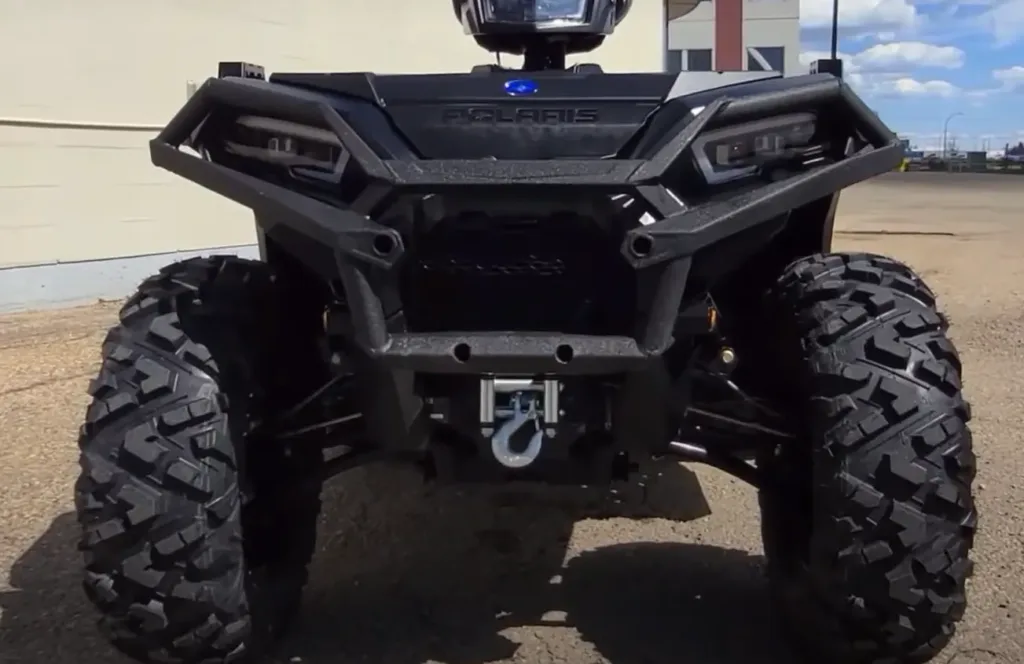
Renegade 1000R XXC:
- Engine: 976cc Rotax V-twin engine
- Power Output: The XXC model is designed for agility and high-speed performance on various terrains. It delivers smooth and responsive power, making it ideal for trail riding and navigating through woods.
- Transmission: The Continuously Variable Transmission (CVT) with engine braking ensures that the XXC offers smooth transitions and control, especially in tight trails.
Renegade 1000R XMR:
- Engine: The XMR shares the same 976cc Rotax engine but is tuned for more aggressive performance in extreme conditions.
- Power Output: Designed for mud and rough terrain, the XMR offers a torque-rich experience, providing the power needed to tackle the most challenging environments.
- Transmission: Like the XXC, the XMR features a CVT, but with enhanced features such as a Smart-Lok front differential, which improves traction in muddy conditions.
Suspension and Handling
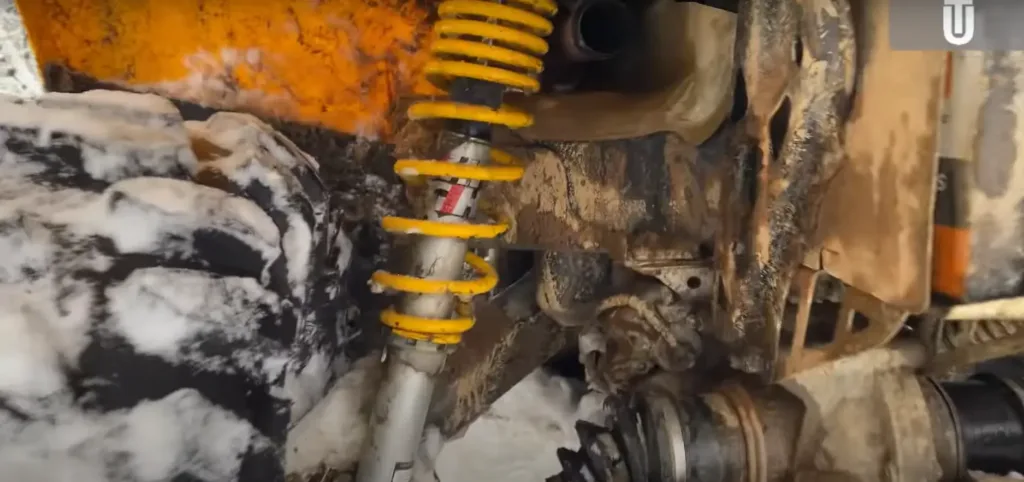
XXC:
- Suspension: The XXC is equipped with Fox 1.5 PODIUM QS3 shocks, which are adjustable for a range of conditions. This setup provides a balance between comfort and performance, ensuring a smooth ride on diverse terrains.
- Handling: With a more compact design, the XXC is highly maneuverable, making it perfect for tight, technical trails. The Tri-Mode Dynamic Power Steering (DPS) adds to its precise handling capabilities.
XMR:
- Suspension: The XMR’s suspension is designed to handle the harshest conditions. It also features Fox 1.5 PODIUM QS3 shocks, but they are tuned for off-road dominance, absorbing impacts from rocks and deep mud pits.
- Handling: Built for rugged terrain, the XMR offers stability and control even in the toughest environments. Its handling is less about agility and more about maintaining power and control over rough and unpredictable terrains.
Terrain Capability and Specialized Features
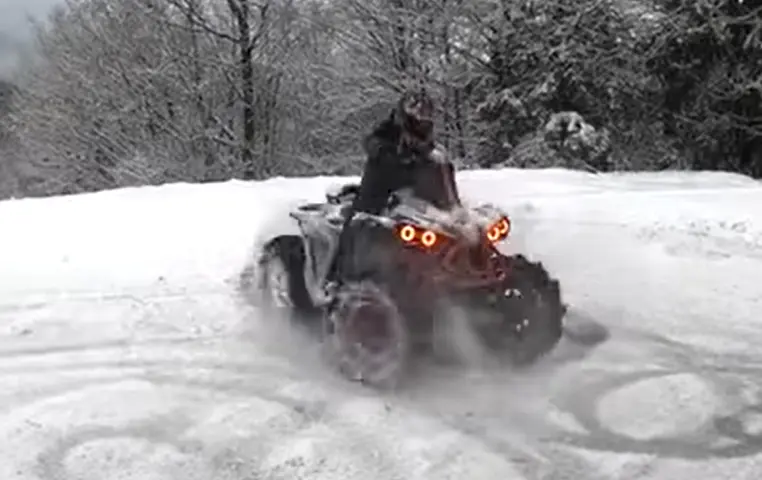
XXC:
- Terrain: Best suited for mixed terrains such as trails, woods, and moderate mud. Its agility makes it a versatile choice for those who like to explore varied landscapes.
- Special Features: The XXC comes with a Visco-Lok QE front differential, which enhances traction on challenging trails. It also includes a 3,000-lb WARN winch, adding utility for recovery situations.
XMR:
- Terrain: The XMR excels in extreme off-road conditions like deep mud, water, and rocky trails. It is specifically built for riders who face tough, unforgiving environments regularly.
- Special Features: The XMR includes a relocated radiator and high-mounted snorkel air intake system, allowing it to perform in deep water without overheating. The 4,500-lb WARN winch provides ample pulling power for even the most difficult recoveries.
Maintenance and Durability

XXC:
- Maintenance: The XXC requires regular upkeep to maintain its high-speed performance. Riders should be diligent with routine checks, especially when riding in varied terrains that can place different demands on the vehicle.
- Durability: Known for its reliability, the XXC holds up well over time with proper maintenance, making it a dependable choice for regular off-road adventures.
XMR:
- Maintenance: The XMR is built to withstand extreme conditions, but this also means that it requires rigorous maintenance to ensure longevity. Regular checks on the snorkel system and radiator are crucial for those frequently in mud and water.
- Durability: The XMR is highly dependable in harsh conditions. Its rugged design and reinforced components ensure it can handle the toughest challenges thrown at it.
Performance in Diverse Climates
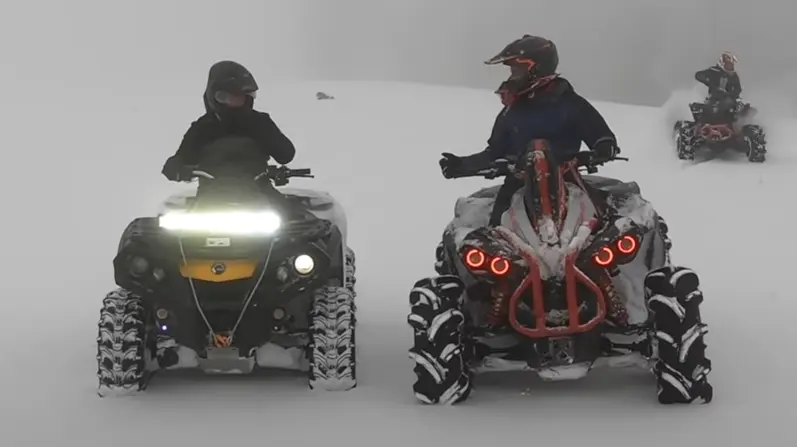
When evaluating off-road vehicles like the Can-Am Renegade 1000R XXC and XMR, it’s crucial to consider how they perform in various climates. Both models are engineered to withstand a wide range of environmental conditions, but each has distinct strengths.
XXC Performance: The XXC shines in temperate climates where trail conditions vary, ranging from loose dirt to packed snow. Its balanced suspension and agile handling allow it to adapt quickly to changes in terrain, making it a reliable choice for year-round riding in regions with moderate weather. Riders often report that the XXC maintains traction well in light snow and on wet trails, though it’s not specifically optimized for extreme cold or deep snow.
XMR Performance: The XMR, on the other hand, is built to excel in harsher climates, particularly those involving wet or muddy conditions. It features a higher ground clearance and a robust, mud-oriented design that allows it to plow through deep, sticky mud and flooded areas without losing traction. The XMR’s engine and critical components are designed to operate efficiently in high-humidity environments, making it a strong performer in tropical or coastal regions where moisture and mud are prevalent. However, riders in colder climates should be aware that while the XMR handles wet conditions superbly, its specialized design might be overkill for those who primarily ride on frozen or snowy trails.
Technology and Connectivity
In today’s technologically advanced world, connectivity and smart technology are increasingly important, even in off-road vehicles. Both the XXC and XMR come equipped with modern tech features that enhance the riding experience, but they do so in different ways.
XXC Technology: The XXC is geared more towards the tech-savvy rider who values data-driven performance. It comes equipped with a sophisticated display system that provides real-time analytics on speed, engine performance, and terrain conditions. This model also supports smartphone integration, allowing riders to connect their devices via Bluetooth to receive calls, listen to music, or access GPS navigation directly from their ATV’s dashboard. This connectivity makes the XXC particularly appealing to riders who use their vehicles for long, exploratory rides where staying connected is essential.
XMR Technology: The XMR focuses on rugged durability with technology that complements its off-road capabilities. While it also offers a robust display system, its tech features are more utility-oriented. The XMR includes advanced traction control systems and automatic differential locking, which are essential for navigating treacherous terrains. These features are designed to function seamlessly even in the muddiest, most demanding conditions, where technology often fails in lesser vehicles. This makes the XMR’s tech suite a critical asset for those who push their vehicles to the limit in extreme off-road scenarios.
Ergonomics and Rider Comfort
Rider comfort is another key factor when choosing between the XXC and XMR. Both models are designed with ergonomic features that enhance the riding experience, but they cater to different types of riders.
XXC Comfort: The XXC is engineered for riders who prioritize comfort during long rides. Its seating is well-padded and designed to reduce fatigue, which is particularly beneficial on extended trail rides. The XXC also features adjustable handlebars and footrests, allowing riders to customize their riding position for maximum comfort. The suspension system in the XXC is finely tuned to absorb bumps and vibrations, providing a smoother ride over rough trails.
XMR Comfort: The XMR, while still focused on rider comfort, is designed for those who expect to encounter harsh conditions. The seating is more rugged, designed to withstand mud and water without becoming uncomfortable. The riding position is slightly more upright, which helps the rider maintain control in challenging conditions. The XMR’s suspension is stiffer, optimized for heavy impacts rather than smooth rides, which is ideal for those tackling extreme off-road environments.
Resale Value and Long-Term Ownership

When investing in a high-performance ATV, it’s essential to consider not just the initial purchase price, but also the vehicle’s long-term value. The resale value and long-term ownership costs can differ significantly between the XXC and XMR models.
XXC Resale Value: The XXC generally holds its value well, particularly because it appeals to a broad market of off-road enthusiasts. Its versatility makes it attractive to a wide range of buyers, from casual riders to serious trail explorers. As a result, the XXC tends to retain a high percentage of its original value over time, especially if it has been well-maintained. Regular maintenance and the model’s reputation for reliability also contribute to its strong resale performance.
XMR Resale Value: The XMR, while also retaining good value, appeals to a more niche market of riders who are specifically looking for a vehicle capable of handling extreme conditions. Because of this, the resale market for XMR models can be more variable, depending on the demand for such specialized vehicles. However, due to its rugged build and the high cost of similar new models, the XMR often fetches a premium price on the used market, particularly if it’s in good condition and hasn’t been subjected to excessive wear and tear.
Environmental Impact
XXC:
- Environmental Considerations: The XXC is designed with an eye towards minimizing its environmental footprint, especially on trails and in woods where delicate ecosystems can be impacted.
- Green Features: Although primarily a performance machine, the XXC includes features that help reduce emissions and fuel consumption.
XMR:
- Environmental Considerations: The XMR, while powerful, is also designed to be as environmentally responsible as possible given its intended use in extreme conditions.
- Green Features: Similar to the XXC, the XMR includes technology aimed at reducing its environmental impact, though it is built to prioritize performance in rugged terrain.
Customization and Aftermarket Support
Overview: Off-road enthusiasts often customize their vehicles to better suit their specific needs and preferences. The availability and diversity of aftermarket parts can significantly impact the ownership experience of the Can-Am Renegade 1000R XXC and XMR models.
XXC Customization: The XXC model is highly favored by riders who enjoy fine-tuning their ATVs for optimized trail performance. The market offers a wide range of aftermarket parts for suspension upgrades, engine tuning, and aesthetic enhancements. Popular modifications include high-performance exhaust systems, reinforced skid plates, and LED lighting kits. These upgrades not only enhance the performance of the XXC but also allow owners to personalize their vehicle’s look and feel, making it truly their own.
XMR Customization: The XMR is a beast in its own right, but for those who demand even more from their off-road experience, the aftermarket support is robust. Riders often add snorkel kits, winches, and heavy-duty tires to further improve the XMR’s ability to conquer extreme environments. Custom lift kits are also popular, giving the XMR additional ground clearance to tackle deeper mud and rougher terrain. The community of XMR owners is active in sharing tips and tricks for getting the most out of their modifications, making it easy for new owners to dive into the world of customization.
Warranty and Service Considerations
Overview: Understanding the warranty coverage and service support provided by the manufacturer is essential when investing in a high-end ATV. Both the XXC and XMR come with Can-Am’s standard warranty, but there are nuances to consider that can affect long-term ownership costs.
XXC Warranty and Service: The XXC comes with a comprehensive warranty that covers major components for a specified period, providing peace of mind to owners. Can-Am’s extensive dealership network ensures that service and repairs are accessible, with many dealers offering specialized service plans that can be tailored to the rider’s usage patterns. For those who regularly use their XXC in demanding conditions, opting for an extended warranty might be a wise investment.
XMR Warranty and Service: The XMR, given its intended use in extreme environments, may require more frequent maintenance than the XXC. Can-Am’s warranty covers critical components, but owners should be aware of the wear and tear that can result from aggressive mudding and off-road use. Service plans tailored to the XMR often include more frequent inspections and maintenance schedules, ensuring that the vehicle remains in peak condition despite the rigors of extreme off-roading.
Legal and Regulatory Compliance
Overview: Riding an ATV like the XXC or XMR isn’t just about performance and thrills; it’s also about staying compliant with local laws and regulations. These vary significantly depending on the region and can influence where and how these vehicles can be used.
XXC Legal Considerations: The XXC is often used on a variety of terrains, including public trails where specific regulations apply. Riders must be aware of local laws regarding ATV usage, such as noise restrictions, trail permits, and environmental protection rules. In some areas, modifications like aftermarket exhaust systems may need to meet certain decibel limits. Ensuring that the XXC complies with these regulations is essential for legal and safe riding.
XMR Legal Considerations: The XMR, designed for extreme off-roading, might be subject to additional regulations, especially when used in sensitive environments such as wetlands or protected areas. Some regions require special permits or restrict the use of ATVs in muddy conditions to prevent environmental damage. Riders should familiarize themselves with these regulations to avoid fines or penalties and to ensure that they are riding responsibly.
Community and Brand Loyalty
Can-Am has cultivated a strong community around its Renegade series, with riders showing a high degree of loyalty to their chosen models. The XXC appeals to those who value versatility and precision, while the XMR attracts a more rugged, adventure-seeking crowd. Both models are respected within the off-road community, and choosing between them often comes down to personal preference and the specific demands of the terrain one expects to tackle.
Accessibility and Inclusivity in ATV Riding
Overview: The world of ATV riding is becoming increasingly inclusive, with more options available for riders of all abilities. The Can-Am Renegade 1000R XXC and XMR models offer features that make them accessible to a broader range of users, including those with physical limitations or specific needs.
XXC Accessibility: The XXC model is designed with user-friendly controls and adjustable components that can be tailored to suit different rider preferences and abilities. Features like adjustable handlebars, seat height, and footrests allow riders to customize their setup for maximum comfort and control. This flexibility makes the XXC a great option for a wide range of riders, including those who may need accommodations due to physical limitations.
XMR Accessibility: The XMR, while more rugged and specialized, also offers features that enhance accessibility. Its high ground clearance and durable design can accommodate adaptive equipment, such as modified seating or hand controls, making it possible for riders with specific needs to enjoy the thrill of extreme off-roading. Additionally, the XMR’s robust suspension system can be adjusted to provide a smoother ride, reducing the physical strain on the rider.
Environmental and Ethical Riding Practices

Overview: As off-roading grows in popularity, it’s essential to consider the environmental impact and adopt ethical riding practices. The XXC and XMR models, while powerful and capable, should be used responsibly to minimize their footprint on natural habitats.
XXC Environmental Impact: The XXC is versatile and often used on various terrains, including environmentally sensitive areas. Riders should be aware of the potential impact on these environments, such as soil erosion and disturbance of wildlife. Following established trails, avoiding off-limit areas, and reducing speed in sensitive zones are crucial practices for minimizing environmental damage while enjoying the XXC.
XMR Environmental Impact: The XMR is designed for extreme conditions, often involving mud and water crossings. While it excels in these environments, riders should take care to avoid wetlands and other ecologically sensitive areas that could be damaged by the vehicle’s powerful performance. Ethical riding practices include cleaning the vehicle to prevent the spread of invasive species and staying on designated paths to protect natural ecosystems.
Advanced Safety Technologies
Overview: Safety is a top priority for any ATV rider, and both the XXC and XMR models are equipped with advanced technologies designed to protect the rider in various conditions.
XXC Safety Features: The XXC comes equipped with a range of safety features, including advanced braking systems and traction control that help maintain stability on uneven terrain. The vehicle’s design also incorporates rollover protection and emergency response systems that can be crucial in the event of an accident.
XMR Safety Features: The XMR is built for extreme off-roading and includes specialized safety features to match. These include reinforced chassis components to withstand impacts, advanced water-resistant materials to prevent malfunction in wet conditions, and enhanced lighting systems for improved visibility in low-light environments. Additionally, the XMR’s automatic differential locking system aids in maintaining control during aggressive maneuvers in challenging terrains.
Frequently Asked Questions
Which model is better for beginners, XXC or XMR?
The XXC is generally more suitable for beginners due to its agility and ease of handling on various terrains. The XMR, with its specialized features for extreme conditions, is better suited for more experienced riders.
Can the XXC handle extreme off-road conditions?
While the XXC is versatile and capable on a range of terrains, it is not specifically designed for extreme conditions like deep mud or water. The XMR would be a better choice for such environments.
How often should I service my XXC or XMR?
Both models require regular maintenance, especially after tough rides. Follow the manufacturer’s recommendations for servicing intervals to ensure longevity and reliability.
Is there a significant difference in fuel efficiency between the two models?
Both models are powered by the same engine, so fuel efficiency is comparable. However, the XMR’s performance-oriented setup might result in slightly higher fuel consumption in extreme conditions.
Can I customize my XXC or XMR?
Yes, both models offer a wide range of customization options, allowing riders to enhance performance, comfort, and style according to their preferences.
Conclusion
Choosing between the Can-Am Renegade 1000R XXC and XMR depends largely on your riding style and the type of terrain you intend to conquer. The XXC offers versatility, agility, and a well-rounded performance for those who enjoy a mix of trail riding and moderate off-road challenges. In contrast, the XMR is built for riders who demand the utmost in off-road capability, particularly in extreme environments like deep mud and rugged trails.
Both models are exceptional in their own right, and either will provide an exhilarating off-road experience. Your choice should reflect your personal preferences, the challenges you want to tackle, and the type of adventures you plan to embark on.
